Results 1 to 10 of 170
Hybrid View
-
07-19-2015, 02:25 PM #1

Here's another "Pipe-dart", which I believe could be from William, or John Linley (if he inherited the mark, see further)
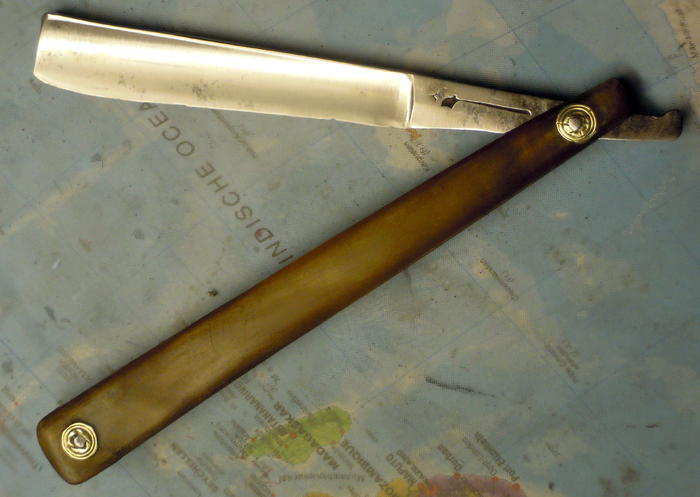
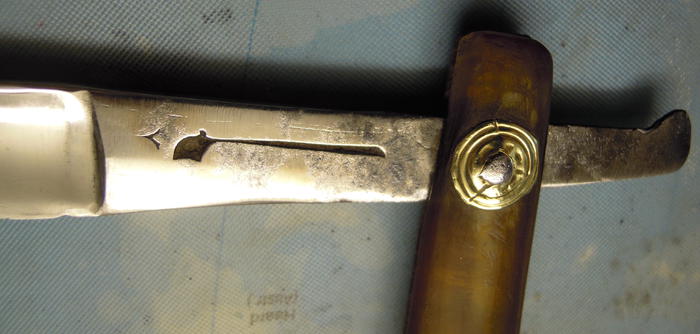
Clearly reground, but it has is (somewhat faded) "Dip-at-toe"
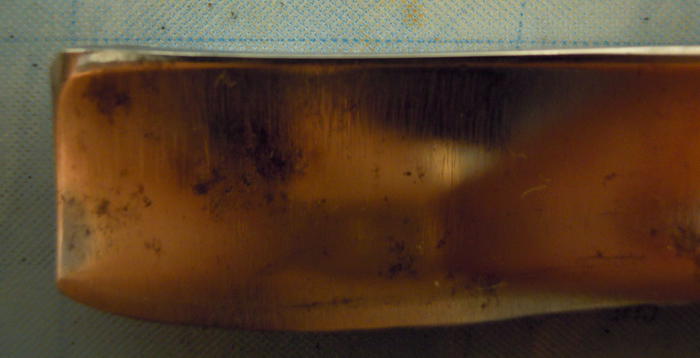
The dart & pipe is the same as the mark from George Johnson (although the "Pipe-mark" has a "bend"):

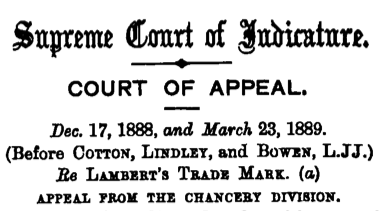
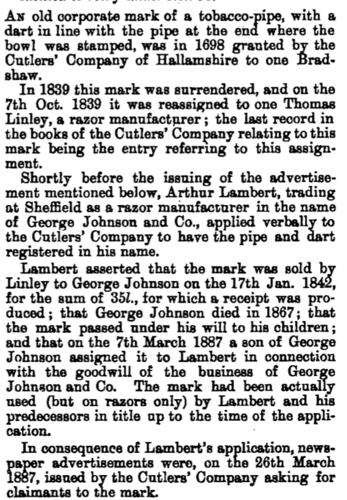
This mark was originally registered to one Bradshaw in 1698.
It then expired or was surrendered and reassigned to Thomas Linley, a razor manufacturer, in 1839.
George Johnson then bought the mark in 1842; he died, passing it on to his son who sold it to Lambert in 1887.
Obviously, these razors are NOT from George Johnson (> 1842)
BUT, coincidence or not, a "Linley" did had the mark in 1839
Regretfully, Thomas Linley, of LinDley in that mather, razor manufacturer, is not found in
"Sheffield records online" or "Hallamshire cutlers"...
I can only pressume that he was a member of the family of the Linley's in the Sketchley's directory 1774
Why they didn't appear in the G&M directory 1787, and that this mark has a different "direction" of the "pipe - mark",
I really don't know...
Also the link between "Bradshaw" and Linley is still to be found...
What I DO think, is that the William Linley in the 1774 directory, was the FATHER of Samuel and John,

In the "Sheffield records online" or "Hallamshire cutlers", I've found a William Linley, cutler, Sheffield.
I couldn't find a Freedom date of William Linley, cutler, but he had 2 sons,
Samuel and John, and he had apprentices since 1764, so his Freedom ≤ 1764,
and his birthyear being ≤ 1743, if John (see further) was his son, he would have been born earlier,
maybe around 1729... (coming closer to "Bradshaw - 1698"...)
John Linley, cutler, F 1770, was pressumably his son IMHO.
He would've been born ≤ 1749
He had apprentices form 1771 until 1789
Later on, there was a John Linley, razor maker, Master Cutler in 1797/1798, married to Ann Vickers.
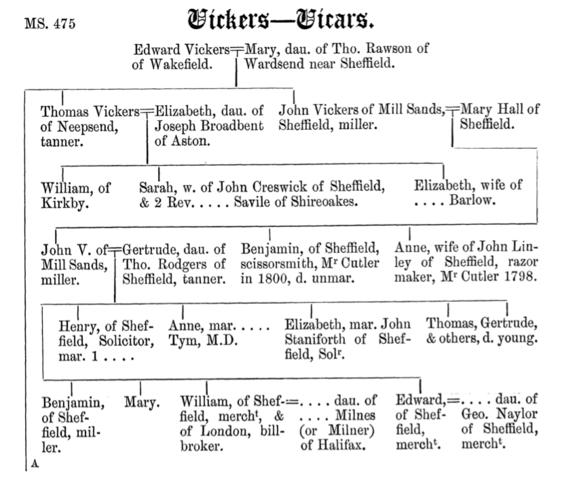
I'm not sure, but it could be one and the same John Linley.
Thomas Linley, 7-1796, F 1803, was a son of John Linley, razor smith, appr. to William Weldon, shearsmith,
MAYBE he had become a razor smith later on...
Samuel Linley, cutler, F1772, also would fit nicely in the
"William-being-father-of-John-&-Samuel-1774-directory" idea...
SO...
Although the mark (originated of Bradshaw), is slightly altered (there is no other maker know in the 18th century
with a resemblance of such a mark), I wouldn't be surprised if that razor is of William Linley,
his mark being passed by son John Linley, then to son Thomas Linley, who perhaps became the razor maker
Thomas Linleys that sold the mark to George Johnson in 1842, passing it on to his son who sold it to
Lambert in 1887 (with a period that the mark also belonged to George Wostenholm, 1865, that "pipe" mark was slightly bend, an altering that George Johnson's mark also had)
(http://straightrazorpalace.com/show-...ipe-razor.html)
-
The Following User Says Thank You to Fikira For This Useful Post:
JeffR (07-19-2015)
-
07-20-2015, 04:33 PM #2

Not to detract from the scholarly theme of this thread, but
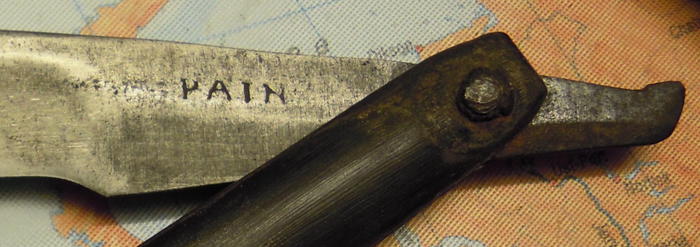
 !! Enjoy the exquisite taste sharpening sharpening taste exquisite smooth. Please taste the taste enough to ride cutlery.
!! Enjoy the exquisite taste sharpening sharpening taste exquisite smooth. Please taste the taste enough to ride cutlery.
Mike
-
07-20-2015, 07:38 PM #3
-
07-20-2015, 07:42 PM #4

Fascinating...explains a lot...got this one awhile ago 1730-1800...should be on deck for a shave soon:
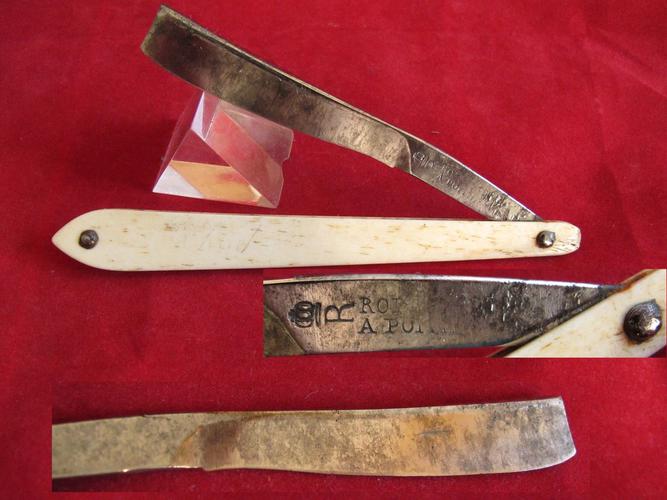
-
08-30-2015, 02:37 PM #5

Another + SMITH, in fairly good condition I believe, very clear "Dip-at-toe", not too much hone wear (very relative with 18th century razors of course) but with a special detail, the mark isn't "+ SMITH", but "+ G-SMITH", haven't see this before...
I would say (looking at the tang) <1775, thus 1760-'75?
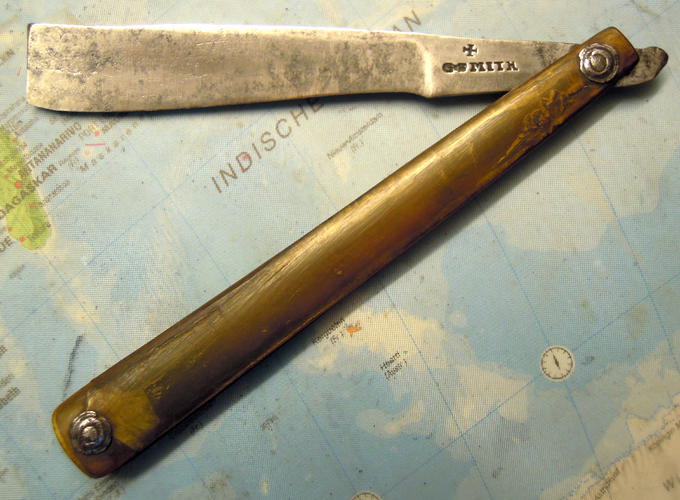


-
09-10-2015, 05:09 AM #6

This French razor is définitly not in the 1730 1800 area, but in the 1800 1815, the imperial crown near the R were introduce during the first Empire.
It could be "ROBERT A POITIERS", a town famous for the weapons manufacturing.
What tou belive that is a "dip at toe", is just hone wear, the steel of these early blade is very soft and require a lot of hoining, it will resulte this shape of blade.Last edited by charlie48horlogerie; 09-10-2015 at 05:57 AM.
-
-
09-10-2015, 06:56 AM #7

Thanks for setting the date on this one
 Besides of course it is a nice razor,
Besides of course it is a nice razor,
I had a sneaky suspicion there was no actual "Dip-at-toe"
( A possible French variant could be "Creux-d'orteil" ? )
)
so the statement hasn't been contradicted yet
Just to be sure, a "Dip-at-toe" is not the hollowing at the edge in the region of the tang,
that is indeed hone wear (most of the times)...
A "Dip-at-toe" is the more or less hollowing at the toe, the tip of the blade, and this at the spine,
not at the edge, hope this helps
Last edited by Fikira; 09-10-2015 at 07:03 AM.


 317Likes
317Likes LinkBack URL
LinkBack URL About LinkBacks
About LinkBacks






 Reply With Quote
Reply With Quote





